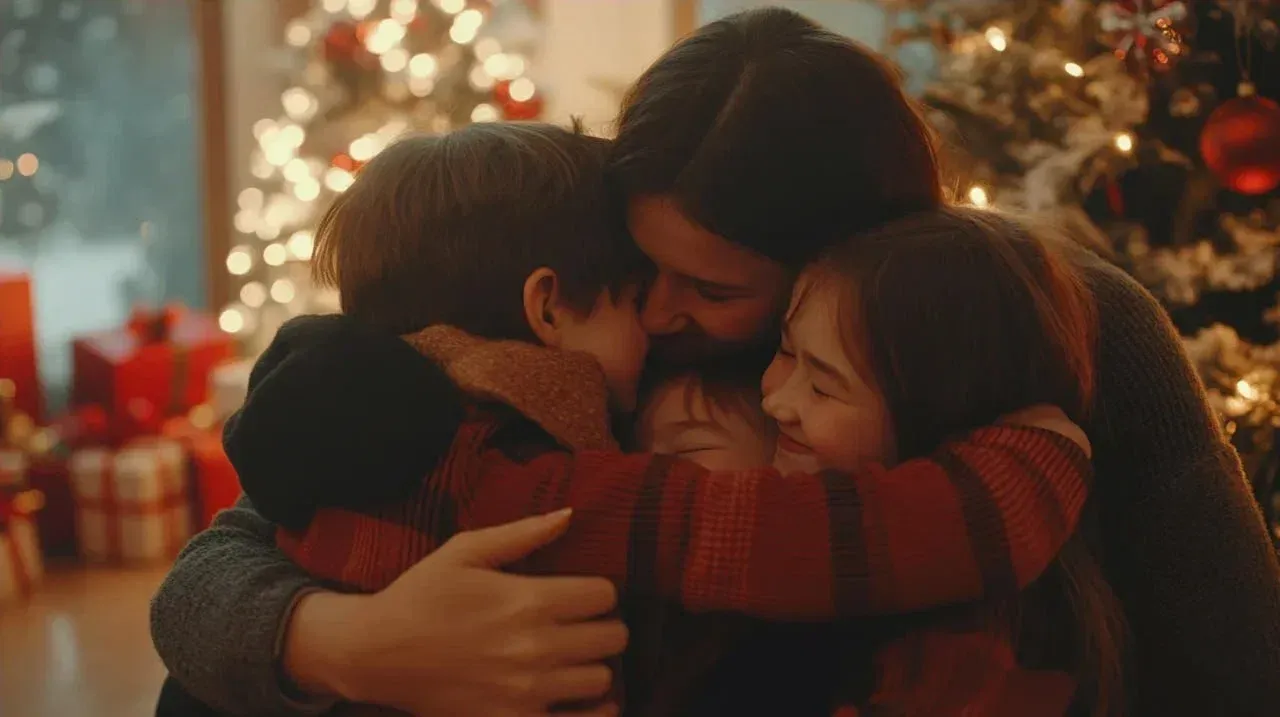How to Preserve Family Christmas Traditions After Divorce and in Blended Families
Divorce is a serious test for any family. It can feel even harder as the holidays approach — this is the season for gathering, exchanging gifts, and feeling part of something meaningful. But even after a separation, you can keep the spirit of Christmas alive.

The most important thing to remember: for a child, Christmas is closely tied to joy and a sense of stability. Adults’ task is to protect that feeling — even if the family no longer lives together. This article explains how to make the holiday as comfortable and pleasant as possible for everyone.
How to Communicate with Children
When a family is changing, staying open with your child matters. Here’s how to do it.
Keep Traditions Within the Family
Even if the parents are divorced, Christmas traditions should continue so children still feel the holiday magic. The same goes for blended families — where children may be from different marriages. In these situations, it’s important to come together and show that parents still love their children and respect each other’s choices.
Preserving traditions helps everyone feel closer and creates a festive atmosphere.
Speak Honestly and Gently with Kids
Divorce often triggers anxiety for a child, shakes their footing, and creates a sense of instability. It can show up most around the holidays, when families typically gather. To keep Christmas from becoming a symbol of loss, explain what’s happening with care. Here’s how:
- Be honest.
Don’t make up stories or dodge the question when a child asks why their parents are celebrating Christmas separately — children sense dishonesty. It’s better to explain that both parents still love them and want their Christmas to be happy. - Make it clear the child isn’t to blame.
A common wound for kids is believing they caused the divorce. Spell out that they bear no responsibility — this was an adult decision. - Give space for their feelings.
Ask how they want to celebrate and what matters to them. Listen and try to honor their wishes. This helps them feel heard and valued. - Explain the holiday plan in advance.
Predictability signals safety. For example: Christmas Eve with mom, an outing with dad on Christmas Day. Knowing the plan lowers anxiety. - Keep them out of conflicts.
Don’t discuss finances or personal disputes around the holiday. Christmas is a time for wonder, not a battleground between adults. - Maintain Familiar Rituals.
Even if you no longer live together, it’s vital to keep the rituals your child associates with the season: decorating the tree, cooking holiday dishes, reading Christmas stories, or watching a favorite movie. Familiar routines build stability and reassure them that the holiday still “feels like it always has.”
How to Maintain Emotional Connection with Children
Children want more than gifts — they want care, affection, and attention. Even if the adults aren’t together, make the celebration and this transition as comfortable as possible. Alongside familiar rituals, start new ones — like ringing in the evening together on a video call if you’re apart.
Accept the New Reality
The holiday won’t be exactly as it was — and that’s normal. Don’t force togetherness or pretend everything is perfect — kids sense that. Accept that the new situation calls for new approaches. Christmas may look different and still be calm, pleasant, and meaningful.
Set Up Clear Parent-to-Parent Dialogue
Discuss plans ahead of time — who spends which days with the children and how transitions work — so there’s no last-minute conflict on the holiday. Clear agreements reduce tension and make Christmas predictable and joyful for the child.
Practical Tips for Preserving Christmas Traditions
A few approaches can help keep the holiday feeling intact and make Christmas enjoyable for everyone.
Discuss Which Traditions Matter
Ask your child what Christmas means to them. It might not be presents or the tree — it could be Santa’s visit, a specific movie you always watch, or going skating together.
“Split” the Holiday
If celebrating together isn’t possible, divide moments and responsibilities. Maybe the child decorates the tree with one parent and visits the Christmas market with the other. You can also divide the season — Christmas Eve with one parent, Christmas Day or New Year’s with the other.
Create New Family Traditions
With changes at home, new rituals can help. Alongside the old ones, try something different — like Secret Santa. Every family member, including younger kids and new partners, prepares a small surprise. It brings people together, eases tension, and adds playful fun kids love.
To simplify setup and avoid arguments over “who handles what,” use MySanta, an online Secret Santa tool. It lets you:
- Build wishlists.
- Keep the mystery until gift-opening.
- Run the random draw and form pairs in seconds.
- Set exclusions so certain players don’t get each other.
With younger children, you’ll help them and let them know whom they’re gifting. Teens can participate on their own.

Tips for Blended Families
When new partners and their children are in the picture, the holidays can be especially delicate. Keep these principles in mind so Christmas doesn’t become a source of conflict.
Respect the New Family’s Traditions
If mom has a new husband or dad a new wife, respect the rituals they bring. Show children that the family is united. Avoid dividing customs into “ours” and “theirs.” Try merging important rituals into one celebration so everyone feels seen.
Avoid Competition Between Households
Competing over who hosts the “better Christmas” only raises stress. Kids want wonder and joy — not a “Parent of the Year” contest. Show that the holiday is about happiness, not rivalry.
Mistakes to Avoid
Let’s recap what not to do — and how to do it better — so the holiday stays cheerful and comfortable for all.
| What Not to Do | What to Do Instead |
|---|---|
| Use Christmas to hash out adult conflicts | Postpone tough conversations and avoid tense topics around your child. |
| Try to “buy” a child’s affection with gifts | Show emotional presence and make time for shared activities. |
| Turn the child against the other parent | Keep kids out of conflicts — model respect for both parents. |
| Make impulsive holiday decisions | Take a measured approach — don’t act on emotion alone. |
| Overlook quality time with your child | Be present — keep core traditions and meaningful routines. |
| Rely on generic advice from others who’ve divorced | Every situation is unique — choose what serves your child best. |
Conclusion
Divorce changes the shape of the holiday — but it doesn’t cancel it. By preserving old traditions and adding new ones, you can give children warm Christmas memories and show them that family is, above all, love and care — not just living under the same roof.
